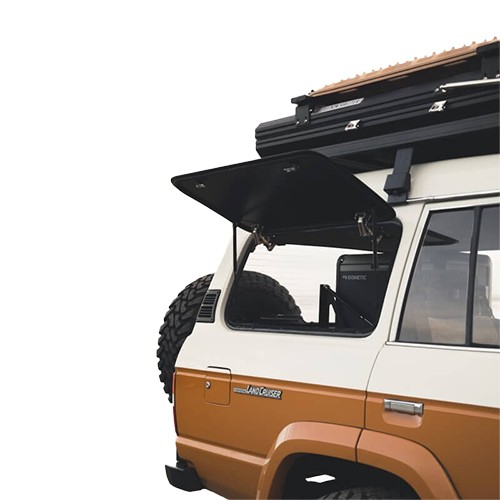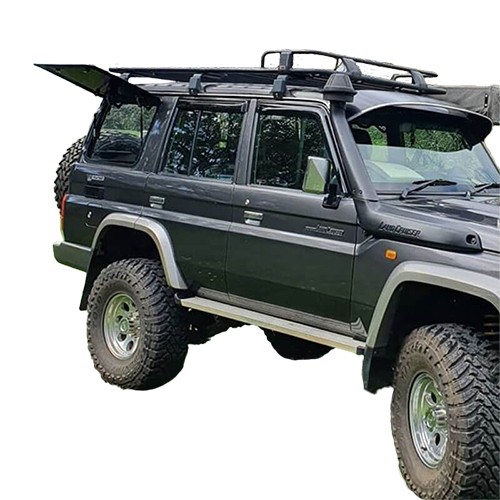Performance Exhaust Systems - Make Your 4WD More Powerful & Fuel Efficient
It's amazing how many people spend time and money improving the performance of their engine but forget about the exhaust. Probably they figure that by the time hot gas comes out the engine all the important stuff has already happened. That's way off the truth, though. The factory exhaust on your vehicle will work just fine, but like everything else it's built to a price and manufacturers are usually conservative when it comes to things like noise and emissions standards. By carefully choosing and fitting the right parts you can easily boost your engine performance by 10%, sometimes even more. It's an economical way to get more power for less fuel consumption, so if you really want to get the best from your engine it should be one of the first things you look at. It's also an upgrade that many people can do themselves, which saves on costs.
A good exhaust makes a difference to any engine, but if you're running a turbodiesel you really need the best you can get. The turbo is what feeds your engine air to boost its power, and the exhaust is what drives the turbo. That's pretty clever, because it uses waste energy to improve performance, but there are also issues. Firstly the turbo can cause back pressure, which obviously is a bad thing. A good system will keep that to a minimum. Secondly a weak flow in the exhaust will reduce the turbo's performance. Keep everything flowing nicely and you'll get faster response and higher turbo pressures, which really lets your engine get to work.
Your exhaust system has several parts and they all affect performance in different ways. There are some priorities in every part, of course. You want a system that allows fast flow, so the engine isn't choking on its own gases. The exhaust plays a vital part in extracting heat from the engine, too. It needs to keep noise down as much as possible, and the more you can do to keep emissions down the better. On a 4x4 you also need to think about durability. The bottom of your vehicle can take a bit of a beating on rough ground, and even with an underguard fitted there are bits of the system that can get damaged. You need to make sure everything is as tough as possible. Once you get past these general points, though, you want to look at each part in turn.
Manifolds
The manifolds are the exit point from the engine. Factory ones are usually designed to save materials and space, and top performance is a lower priority. The most common problem is where the individual pipes from each cylinder join into a single pipe. If they're different lengths pressure waves can build up as the cylinders fire in sequence, and this has a slight choking effect on the engine. Well, not all that slight sometimes - it can reduce power by up to 5%. What you need is a proper header, designed to give optimum gas flow with no pressure issues.
Engine Pipe
This section runs from the manifolds back to the catalytic converter or particulate filter. It's pretty simple, but like the manifold you're looking for flowing curves that don't slow the exhaust down. You also want to make sure that as much heat stays in the gas as possible, instead of being transferred to the pipe.
Catalytic Converter
If you have a petrol engine you'll need one of these. What you want is one with the highest flow rate you can get, so it cleans up the carbon monoxide from your exhaust without building up back pressure that stifles your engine. On a diesel you'll have a particulate filter instead.
Silencer
The silencer reduces the pressure in the system, so cuts down the noise it makes. Unfortunately it can also cause back pressure. A higher quality unit minimises this but still reduces exhaust noise. In an off road vehicle it needs to be protected or strongly built, because they can easily get bashed.
Tail Pipe
This is another simple bit, but it's important. It directs the hot gas away from the back end of your vehicle. Lose this bit and you can end up with heat damage at the rear, so make sure it's sturdy.
Upgrading any section of the exhaust will improve performance, but you'll get the best results by choosing bits designed to work together. Quality parts are essential, too. This is one place where you really don't want to settle for second best. Look for heavy gauge aluminized steel, to give you ruggedness and heat resistance. A good exhaust will be mandrel bent; this involves shaping the pipes over a curved steel bar; you get the flowing curves that keep back pressure down, but no risk of crimping or weak spots. Cheaper pipes just get shaped on a bending machine, and this limits the curves that can be achieved. The shape should be based on what gets the best gas flow, not on what's easier for the workshop, so make sure you're getting mandrel bent parts.
It's probably obvious by now that we think exhausts are pretty important. It makes perfect sense though. A good exhaust system will reduce wear on your engine, boost power so you can get yourself through even more terrain than ever, and save you up to 10% on fuel consumption. If you've upgraded your vehicle with jerry can racks or even a long range fuel tank it would be silly not to squeeze even more range out of it. Performance exhausts are a winner all round, so if you don't already have one you should start looking now.







